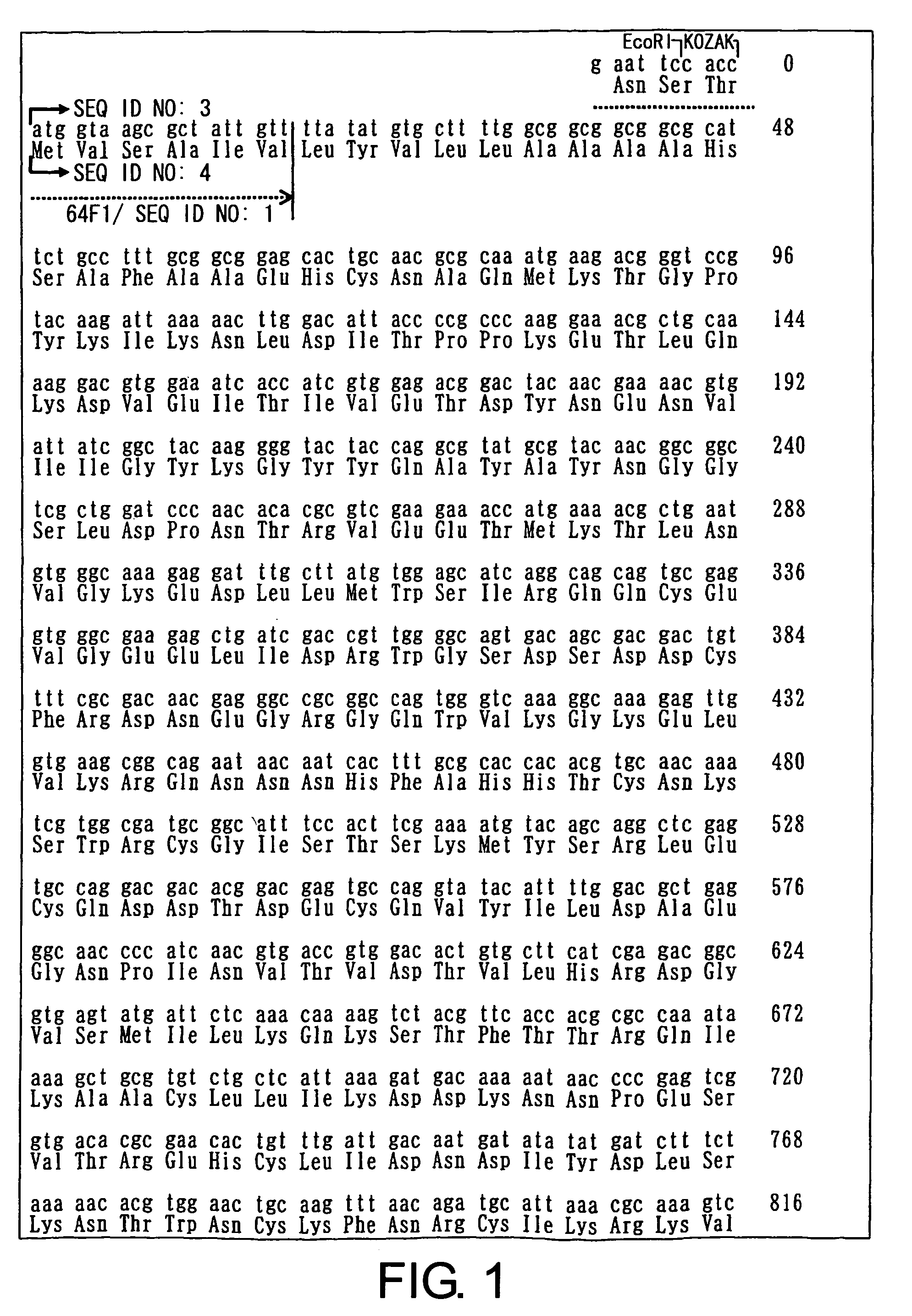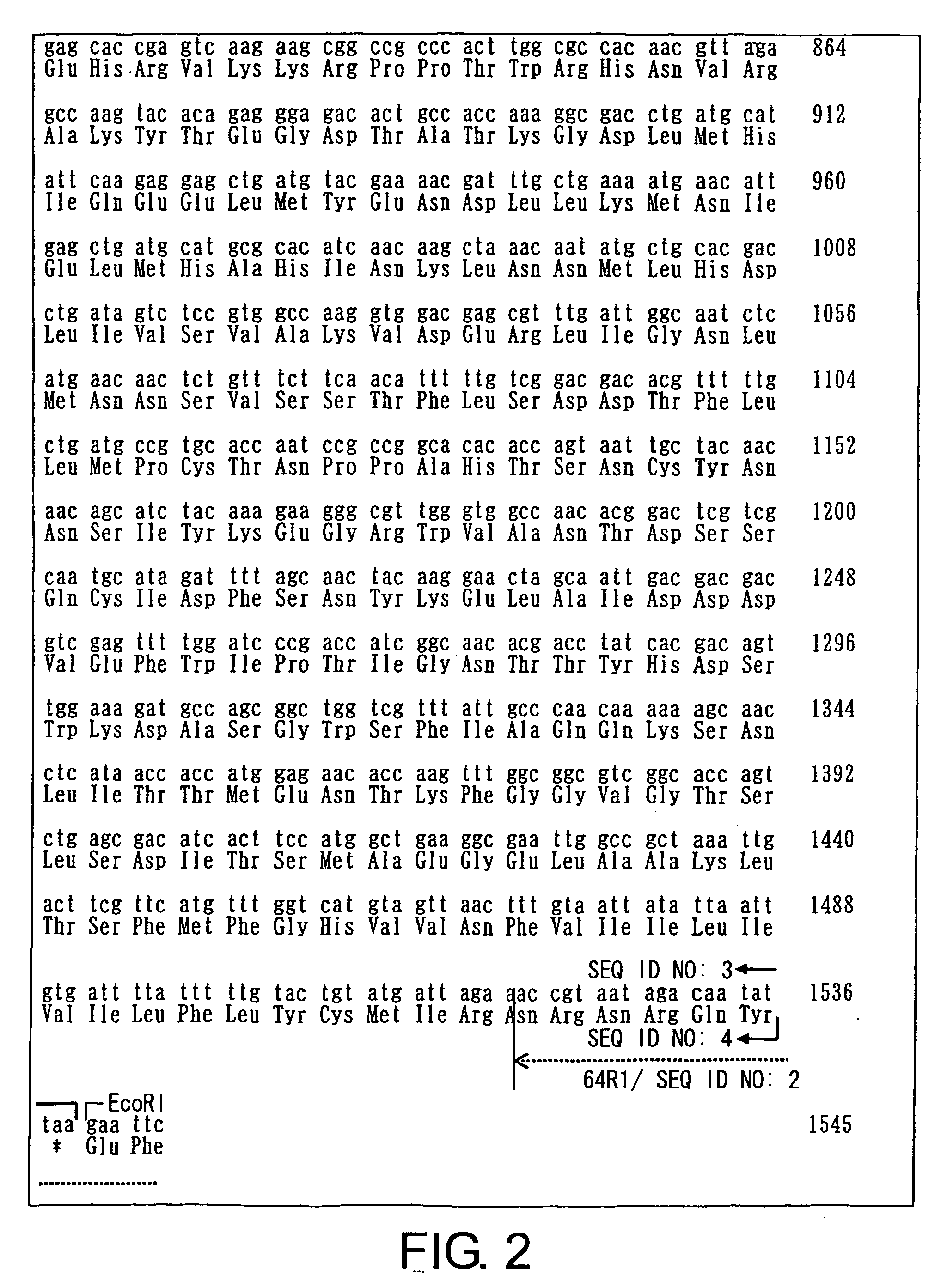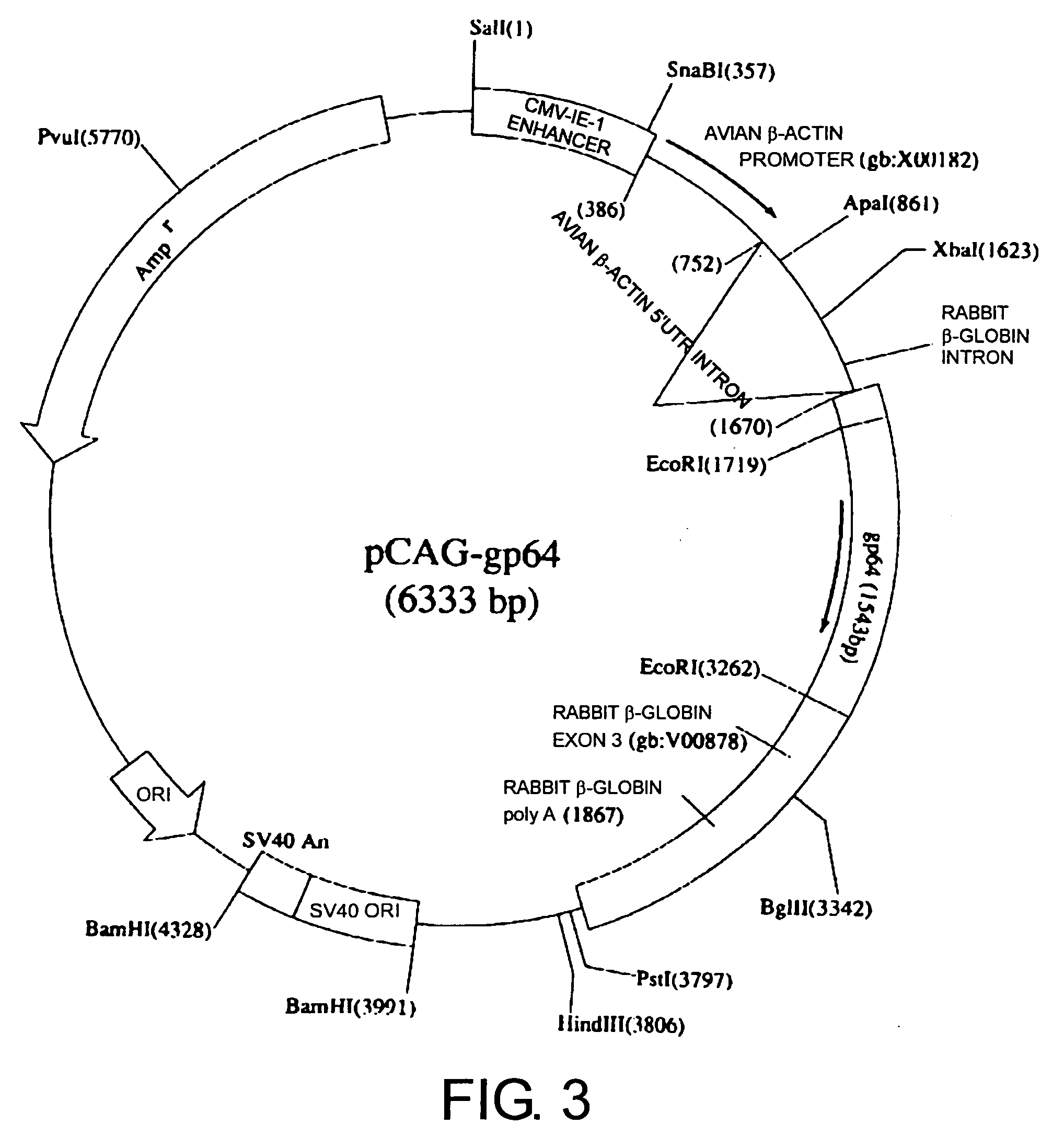Method of constructing antibody
a technology of antibody and production method, which is applied in the field of methods for producing antibodies, can solve the problems of difficult purification or sufficient preparation of antigens, difficult high expression or sufficient purification of membrane proteins, and inability to obtain subject antibodies efficiently by antibody production methods, etc., and achieve the effect of efficiently producing subject antibodies and easy acquisition of target antibodies
- Summary
- Abstract
- Description
- Claims
- Application Information
AI Technical Summary
Benefits of technology
Problems solved by technology
Method used
Image
Examples
example 1
Construction of gp64 Transgenic Vector
[0130] The nucleotide sequence of gp64 and the amino acid sequence encoded by the gp64 gene are shown in SEQ ID NOs: 3 and 4, respectively (GenBank Acc No. 9627742). PCR was carried out using the gp64 gene as a template, and using the following primer set: the 5′ primer 64F1 (SEQ ID NO: 1), which comprises an EcoRI recognition sequence and the KOZAK sequence at its 5′ terminus; and the 3′ primer 64R1 (SEQ ID NO: 2), which comprises an EcoRI recognition sequence at its 5′ terminus (FIGS. 1 and 2). The PCR conditions are shown below:
[0131] The PCR reaction solution composition was 5 μl of ×10 ExTaq buffer, 4 μl of dNTP supplied with ExTaq, 1 μl of 10 μmol / l 64F1 primer, 1 μl of 10 μmol / l 64R1 primer, 1 μl of 500 pg / μl pBac-N-blue, 0.5 μl of 5 units / μl ExTaq, and 37.5 μl of DIW. PCR was carried out for: [0132] 5 minutes at 94° C.; [0133] 25 cycles of “15 seconds at 94° C., 30 seconds at 57° C., and 30 seconds at 72° C.”; [0134] 7 minutes at 72° C...
example 2
Introduction of the Gene
[0137] The DNA fragment for injection was prepared as follows: The pCAGGS vector into which the gp64 gene was inserted (pCAG-gp64, FIG. 3) was treated with SalI and PstI to yield a fragment (about 3.8 kb) comprising the gp64 gene. This fragment (about 3.8 kb) was extracted using the Gel Extraction kit (QIAGEN), and then diluted with PBS to a concentration of 3 ng / μl, yielding the DNA fragment for injection.
[0138] The mouse pronuclear eggs to be injected with the DNA fragment were collected as follows: Specifically, BALB / c series female mice (Nippon CLEA) were induced to superovulate by intraperitoneal administration of 5 international units (i.u) of PMSG, followed by intraperitoneal administration of 5 i.u of hCG 48 hours later. These female mice were mated with male mice of the same lineage. The morning after mating, the oviducts of female mice that were confirmed to have a vaginal plug were perfused to recover pronuclear eggs.
[0139] The DNA fragments wer...
example 3
Confirmation of the Introduced Gene
[0143] DNA was extracted from tails of three week-old mice using an automated nucleic acid isolation system (KURABO), and the presence of the introduced gene was confirmed by Southern blotting method and PCR. The introduced gene was confirmed by Southern blotting, as follows: First, 15 μg of genome DNA was digested with EcoRI, subjected to electrophoresis, and transferred to a nylon membrane. Then, the presence of the introduced gene was confirmed by hybridizing the transferred DNA with a probe, which was about 1.5 kb of EcoRI-digested fragment of pCAG-gp64 vector that comprises the gp64 gene. The presence of the introduced gene was also confirmed by the PCR method, using about 100 ng of DNA as a template, and primers comprising the sequences as shown below:
Sense primer 64F1:GAATTCCACCATGGTAAGCGCTATTGTT;(SEQ ID NO:1)andAntisense primer 64R1:GAATTCTTAATATTGTCTATTACGGT.(SEQ ID NO:2)
PCR was carried out for: [0144] 5 minutes at 94° C.; [0145] 35 cy...
PUM
 Login to View More
Login to View More Abstract
Description
Claims
Application Information
 Login to View More
Login to View More - R&D
- Intellectual Property
- Life Sciences
- Materials
- Tech Scout
- Unparalleled Data Quality
- Higher Quality Content
- 60% Fewer Hallucinations
Browse by: Latest US Patents, China's latest patents, Technical Efficacy Thesaurus, Application Domain, Technology Topic, Popular Technical Reports.
© 2025 PatSnap. All rights reserved.Legal|Privacy policy|Modern Slavery Act Transparency Statement|Sitemap|About US| Contact US: help@patsnap.com



